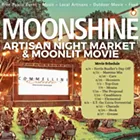The story in Crush is about an insomniac named Danny who needs help finding his marbles. They've been scattered around large structures built out of thick platforms and blocks in a virtual world representing his unconscious. While I can navigate Danny through this 3D world, he can't reach all of his marbles without "crushing" the gameworld into two dimensions. Blocks that were floating far away in space come near, and platforms that were broad and wide become merely thick. Three dimensions are compressed into two.
It's an uncanny effect, and Danny scampers and climbs around these Escheresque dreamscapes like a videogame antihero. As he amasses his marbles, Danny's memories return to him, and he comes to understand the reason for his insomnia. While this story doesn't lead the game down any insightful neo-Freudian avenues, it does provide the game's lead artist, Jonathan Taylor, and lead designer, Alex Butterfield, with their visual and interactive cues.
Taylor's images are dark and cartoonish. Outside of the mazes, lines rarely run straight, and buildings totter on the game's horizon. Danny himself is lanky, shuffling around in a threadbare housecoat, jaw perpetually slack. When his story is told through hand-drawn cartoon images, the game animates the still panels with lighting tricks and zooms that make the pictures feel cinematic despite their simplicity.
Butterfield's puzzles, on the other hand, are complex enough to induce a trance-like state of concentration. Many of the marble mazes are too large to take in at a glance. That breaks the dimension-crushing into smaller chunks that must be strung together logically (or luckily) to reach the maze's end. After playing each maze, however, the maze can be used for timed runs through the puzzle, which become mind-bending click-fests as the PSP twists and compresses space at warp speed.
THE GOOD: Crush distinguishes itself with superb production values. The insomniac plotline bleeds through the entire game, from the warped music to the clock pendulum that smears across the loading screens. Not a single graphic looks sloppy or quickly designed, and the animated 3D backgrounds in each puzzle are much more satisfying than most of the pictures of "thematic" junk that get thrown around in other puzzle games. Crush's producer, Paul Mottram, has delivered a rock-solid oddball of a game.
THE BAD: The frustrating part of Crush isn't logical, it's logistical. The dimension-smashing is all for the purpose of creating platforms that can be climbed up like ladders, run across like bridges, and jumped from like cliffs. At that point, Crush becomes a generic, themeless platform-jumping game. After spending so much frustrating fun figuring out the gnarly puzzles, it's exasperating to try making jump after jump in a generic game that is not gnarly at all.
THE BOTTOM LINE: Crush turns the PSP into a dimension-flipping, view-flopping portal to the best puzzle videogame in years.
4/5 Stars














